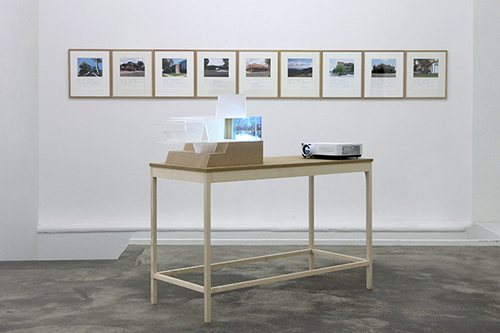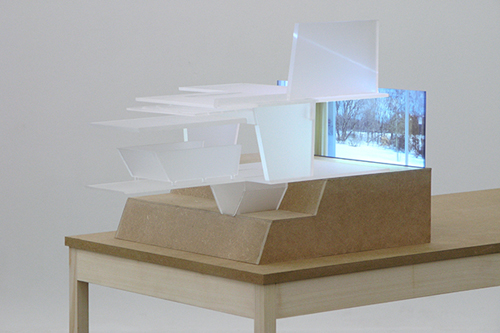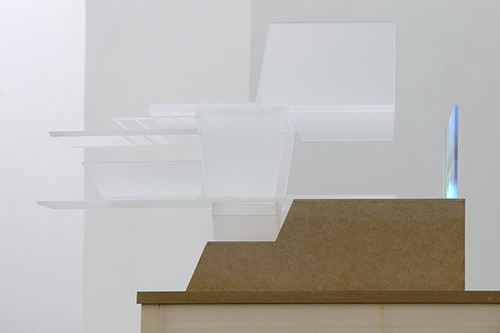[2010] Transparent Scenario (Set for a Possible Movie)
Architectural model from acrylic-glass, rear-projection video, wooden table construction
145 x 55 x 121 cm
Transparent Scenario (Set for a Possible Movie) is based on the utopian idea of glass architecture and its socio-political illusions, particularly Sergei Eisenstein's script Glass House (1930)—a never realized film project he proposed to several Hollywood Studios. Inspired by the science fiction novel We (Yevgeny Samjatin, 1920), as well as by the glass high-rise projects of both Mies van der Rohe (the proposed high-rise Bahnhof Friedrichstrasse, Berlin, 1921) and Frank Lloyd Wright (the unrealized Saint Marks-in-the-Bouwerie Towers, New York City, 1930), Eisenstein uses a completely transparent glass skyscraper as a set for a film.
Transparent Scenario adapts these references and transfers the idea into a transparent architectural model of a private residential house. Based on a drawing illustrating an architectural vision of a fictitious architect, inspired by Frank Lloyd Wright (created by the set designer Edward Carrere for the film The Fountainhead), the project converts the heavy concrete walls into a transparent "glass" structure. Combined with a projected, animated photograph showing the view through the glass walls of Mies van der Rohe's Farnsworth House and its reflection, the now transparent house becomes a model for a new cinematic space—a space that extends the systems of cinematic representation.
The slightly opaque material of the model aims not to destroy the architectural shape, but also hardly limits the transparency, in order to create an experimental architectural cinematic space with simultaneous views, while also relating to the psychology of filmic space, as well to its own history: the first film studios, known as "glass houses", were in actuality glass structures.
< Index



